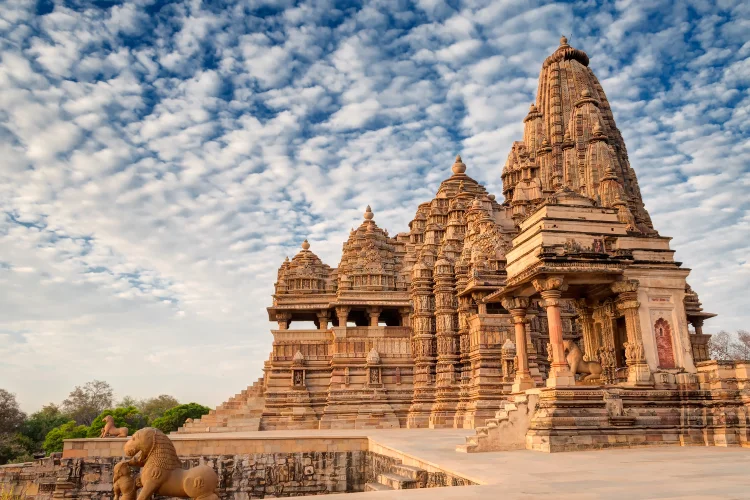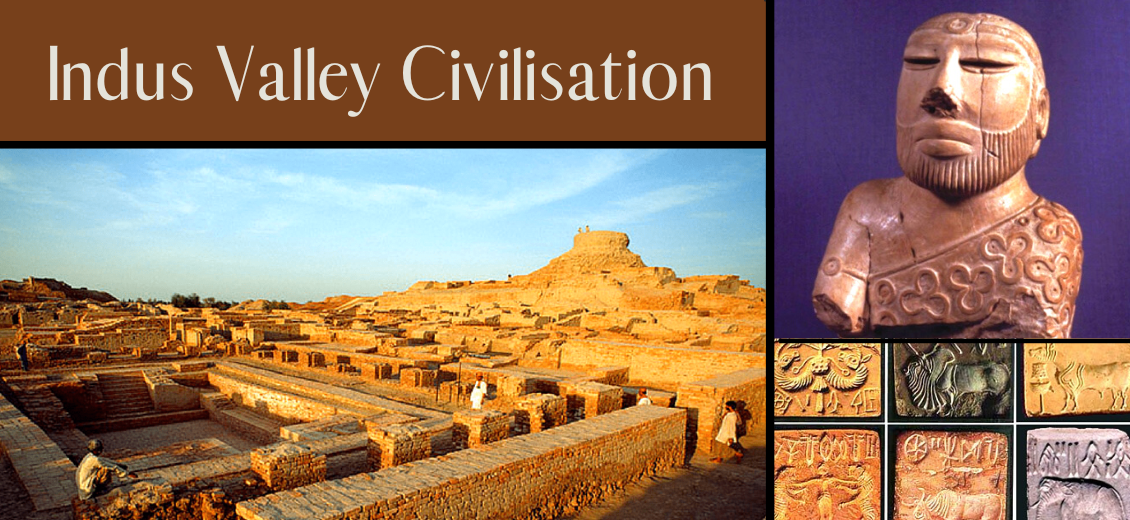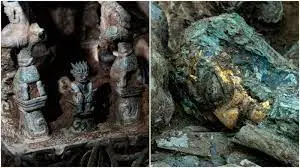The Rediscovery of the Saraswati River: The Saraswati River has long been the subject of myths, legends and intrigue in the Indian subcontinent. Once believed to be a river of great historical significance, its existence has faded into the pages of ancient texts and stories. However, in recent years, the rediscovery of the Saraswati River has captivated archaeologists, historians and scientists alike, providing new insights into ancient civilizations. This article explores the rediscovery of the Saraswati River and its significance in understanding the ancient history of India.
Ancient Significance of the Saraswati River:

The Saraswati River is mentioned extensively in ancient Hindu scriptures, particularly in the Rigveda, where it is revered as a sacred river. It is said to have flowed across northern India, its source is believed to be in the Himalayas, and it played a central role in the spiritual and cultural life of the Indus Valley Civilization. The river was considered the lifeline of the region, providing water, transportation, and fertile soil for agriculture.
As the most important river in the Vedic period, the Saraswati is said to have been a powerful force that helped shape the civilization of ancient India. Over time, the river mysteriously dried up, and its existence has become a matter of debate. Some scholars have speculated that the Saraswati never existed, while others have pointed to ancient texts and oral traditions that indicate its once mighty flow.
Finding the Saraswati River:
In modern times, the search for the Saraswati River has taken a more scientific approach. Archaeologists and geologists have used a combination of satellite imagery, geological surveys, and excavations to trace the river’s course. One of the most significant discoveries came in the 1990s, when satellite images revealed traces of a large river system flowing through the desert regions of northwestern India, consistent with descriptions found in ancient texts.
This led researchers to believe that the Saraswati River may have once flowed through the Thar Desert, a region that was once lush and fertile. Further studies revealed signs of ancient riverbeds and traces of human settlement along the river’s supposed course, lending credence to the idea that the Saraswati is not just a myth but a real river that played a key role in the rise of ancient civilizations.
Role of technology in Saraswati river rediscovery:
Modern technology has played a key role in the rediscovery of the Saraswati River. Advances in remote sensing technology, such as ground-penetrating radar and satellite imagery, have allowed scientists to identify hidden riverbeds that are not visible on the surface. These tools have also helped map the river’s historical course, tracing it from the Himalayas through present-day Haryana, Rajasthan, and Gujarat.
In addition to satellite imagery, geological surveys have helped to trace the course of the Saraswati based on changes in the Earth’s surface, providing further evidence that the river once flowed across the northern plains of India. By comparing ancient texts with modern scientific data, researchers are piecing together the historical puzzle of the Saraswati River.
Saraswati river impact on ancient civilizations:

The rediscovery of the Saraswati River has important implications for our understanding of ancient civilizations in India. The Indus Valley Civilization, one of the oldest and most advanced civilizations in human history, is believed to have flourished on the banks of the Saraswati. The fertile land and water supply provided by the river supported agriculture, trade, and urban development.
As the river dried up, it is believed that the Indus Valley Civilization declined, contributing to the migration of people and ultimately to other regions. The fading of the Saraswati River is believed to have played a role in the rise of other major rivers in the region, such as the Ganges and the Yamuna.
Cultural and Spiritual Importance of the Saraswati River:
Beyond its geographical and historical importance, the Saraswati River holds deep cultural and spiritual significance in Hinduism. She is worshipped as the goddess of knowledge, scholarship and arts. Temples dedicated to the goddess Saraswati are scattered across India, symbolising reverence for knowledge and creativity. The rediscovery of the river’s ancient course has revived interest in its sanctity, bringing together scholars, spiritual leaders and devotees in celebration of India’s rich cultural heritage.
The rediscovery of the Saraswati River has opened a new chapter in the study of ancient Indian history. It has bridged the gap between myth and reality, providing compelling evidence that the river once flowed through a vast region, supporting a thriving civilization. As ongoing research continues to uncover more information about the Saraswati, it is clear that this ancient river holds the key to understanding the origins of Indian civilization and its cultural evolution.
Read Also: The Archaeology of the Ganges River
![]()






One thought on “The Rediscovery of the Saraswati River”